Contact
Seiji Samukawa samukawa@ifs.tohoku.ac.jp |
Invited Talks
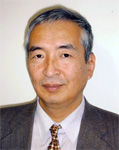 |
Masayoshi Esashi |
|
| Masayoshi Esashi received the B.E. degree in electronic engineering in 1971 and the Doctor of Engineering degree in 1976 at Tohoku University. From 1976 to 1981, He served as a research associate from 1976 and an associate professor from 1981 at the Department of Electronic Engineering, Tohoku University. Since 1990 he has been a professor and he is now in The World Premier International Research Center Advanced Institute for Materials Research, Tohoku University, (TU-WPI) and director of Micro/Nanomachining Research & Education Center (Micro/Nano Center (MNC)) in Graduate School of Engineering in Tohoku University. He was a director of the Venture Business Laboratory in Tohoku University (1995 1998). He was a collaboration coordinator for Sendai city (2004 2006). He served as a general co-chairman of the 4th IEEE Micro Electro Mechanical Workshop in 1991 held in Nara, Japan and also as a general chairman of the 10th International Conference on Solid-State Sensors and Actuators (Transducers 99) in 1999 held in Sendai, Japan. He has been studying microsensors and micromachined integrated systems (MEMS). Authored books : "Basics of semiconductor Integrated circuit design" (Japanese) (1981) Baihukan, "Electronic and information" (Japanese) (1989) Shokodo, "Micromachining and micromechatronics" (Japanese) (1992) Baihukan etc. Awards : Japan IBM science award (1993), SSDM Award (2001), Kahoku cultural award (2005), Purple ribbon award (2006) etc. |
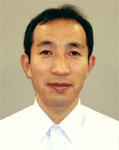 |
Toshihisa Nozawa |
|
| Toshihisa Nozawa graduated in 1985 with an M.A. degree from the Keio University Institute of Technology University and began his employment at Tokyo Electron Ltd. He had been consistently engaged in research and development of semiconductor manufacturing equipment related to process platform technology, heat-treatment technology, and the plasma etching technology. Since 2001, he has led TELfs development team designing and productizing microwave plasma systems for nitridation, oxidation, etching, and CVD. Now, he is promoting the commercialization of these systems as GM of Tokyo Electron Technology Development Institute. In 2004, he earned his Ph.D. in plasma etching from Tohoku University. |
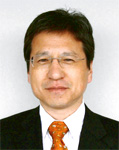 |
Ichiro Yamashita |
|
| Ichiro Yamashita graduated from Kyoto University and started materials research at Matsushita Electric Ind. Co. Ltd in 1978. In 1986, Ichiro Yamashita changed his research field from inorganic materials to structural biology. He was engaged in the structural study of the polymorphism of flagellar filaments in falgellar motor system which plays an important role in the tumbling. The project was carried out at ERATO project in Tsukuba. Based on his expertise in both materials and biology research, Ichiro Yamashita proposed the biological fabrication of key components of nano-electron devices in 1997, which he named Bio Nano Process. Ichiro Yamashita officially started its feasibility study in 1999 and reported that nanoparticles could be artificially produced and arrayed by cage-shaped protein, apoferritin in 2000. In 2004, Ichiro Yamashita and his colleagues succeeded to fabricate the floating gate memory by the Bio Nano Process. Now the Bio nano Process is used in a variety of applications. Ichiro Yamashita is now interested in the biological fabrication of logic devices, which will operate on the basis of quantum effects. |
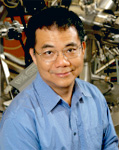 |
Yang Yang |
|
Prof. Yangfs research focuses on novel opto-electronic devices based on low-cost plastic materials. The areas of his interests are solar cells, solid state lighting, nano-particle memory and transistor devices, and many other interesting things. His research has enabled the formation of four startup companies in 2001, 2004, 2006, and 2007, respectively. He leads a research group, consisting of 25 graduate students and postdocs at the Dept. of Materials Science and Engineering, Henry Samueli School of Engineering, UCLA. He has published more than 150 refereed papers, given more than 100 invited presentations on his research work and has filed or granted 30+ patents. He received the following awards and honors: NSF Career Award: 1998; 3M Young Investigator Award, 1998; Who is Who in America, (1997, 1998, 1999, 2000); Professional Development Award, University of Massachusetts-Lowell, (1991). He is also serving as the Director of the Center for Organic Opto-electronics Technologies, Zhejiang University, China. |
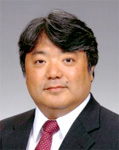 |
Keiichi Torimitsu |
|
His research interests are currently focusing on neuroscience and nano-bio science based on receptor protein. He established a unique collaboration for nano-bio research with Univ. Oxford from 2004. NTT BRL Europe was settled in Univ. Oxford. |
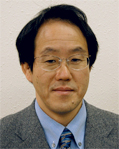 |
Hidenori Akiyama |
|
Hidenori Akiyama received the Ph.D. degree from Nagoya University, Japan in 1979, He was a research associate at Nagoya University from 1979 to 1985, and since then has been on the faculty of Kumamoto University where he established an advanced pulsed power laboratory. He is a leader of the global COE (Center of Excellence) program on pulsed power engineering and the director of Bioelectrics Research Center, at Kumamoto University, Japan. He has been awarded gMajor Educational Innovation Award presented by IEEE Educational Activities Board, 2000h, gIEEE Peter Haas Award at Pulsed Power Conference, 2003h and gGermeshausen Award at IEEE Power Modulator Conference, 2008.h He has developed the repetitive and compact pulsed power generators for industrial applications, such as for cleaning exhaust gases, ozone generation, recycling of concrete and metal plated plastics, extremely ultraviolet (EUV) sources for semiconductor lithography and algae treatment in lakes and marshes. Recently, he is actively investigating the effects of pulsed power on living organisms such as induced apoptosis for cancer treatment, gene recombination and food sterilization. |
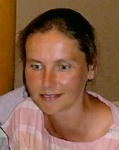 |
Eva Stoffels |
|
Eva Stoffels was born in October 1968 in Warsaw, Poland. She obtained M.Sc. and Ph.D. degrees, in 1991 and 1994, respectively, in plasma physics at the Eindhoven University of Technology in The Netherlands. The topic of her PhD research were dusty low-pressure plasma, plasma chemistry of surface-processing discharges, and elecrtonegative plasmas. In 1995-97 she worked at the Kyoto University on various applications of mass spectrometry in plasma diagnostics. In 2001 she introduced a new concept of treatment of living tissues with cold atmospheric plasmas. At present E. Stoffels is affiliated as a lecturer with the Eindhoven University, where she leads research on non-thermal atmospheric plasmas and their biomedical applications. The main areas of interest are: plasma healing of wounds, fundamental aspects of interactions of cold plasmas with living cells, and dental applications. |
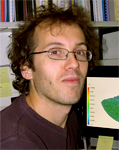 |
Mathieu Renouf |
|
He received his Ph.D. degrees in 2004 in Mechanics from Montpellier 2 University (France) where he majored in Discrete Element Modeling and Optimisation techniques. He went at Tohoku University to work with Pr. Yuji Kishino in 2003 during a JSPS Summer program. After a one year post-doc position in Virtual Reality, he obtained a Associate researcher position in 2005 in his current laboratory, the LaMCoS (Laboratory of Mechanics, Contacts and Structures), INSA Lyon. His research interests are currently focusing on Tribology, especially wear mechanisms, multi-physic modelling involving thermal, electrical and chemical aspects and homogeneization techniques. |
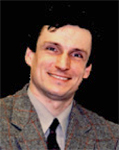 |
Pawel Keblinski |
|
Dr. Keblinski is a professor in the Materials Science Department at Rensselaer Polytechnic Institute (RPI). He received his MS degree in Physics from the Warsaw University and Ph.D. degree in Physics from the Pennsylvania State University. Prior to his RPI appointment he was a postdoctoral researcher at Argonne National Laboratory and Forschungszentrum Karlsruhe. Dr. Keblinski is a recipient of an Alexander von Humboldt Fellowship and the National Science Foundation Career Award. Professor Keblinski is also a leader of the modeling group in the Rensselaer Nanotechnology Center. In his research he uses atomic-level computational methods and theoretical analysis to study structure-property relationships. His main research focus is on modeling of mechanical response and thermal transport in nano-structured materials, nanocomposites and nanofluids and other interfacial materials. His work led to over 100 peer reviewed journal publications. |
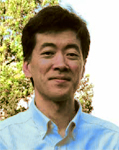 |
Hirofumi Daiguji |
|
Hirofumi Daiguji received the B.E., M.E. and Ph.D. degrees in Mechanical Engineering from The University of Tokyo in 1993, 1995 and 1998, respectively. He joined the Mechanical Engineering Department of the University of Tokyo as a research associate in 1998. He moved to the Institute of Environmental Studies at University of Tokyo as a lecturer in 1999, and became an associate professor in 2002. From 2002 to 2003, he studied transport and reactions in confined liquids (nanofluidics), at the Nano-Engineering Laboratory, Department of Mechanical Engineering, the University of California, Berkeley, as a visiting scholar. His research interests are currently focusing on micro-, nano-, and molecular-scale heat, mass and charge transfer mainly in@energy related technologies. By analysis and control of transport phenomena in material processing and other applications, he designs and develops micro- and nano-structures and their integrated systems. Current research topics include: 1) Transport and reactions in nanofluidic channels for manipulation and detection of ions and molecules, 2) Adsorption and diffusion in porous materials and their application for desiccant heat pump systems, 3) Control of micro- and nano-structure of catalyst layers in polymer electrolyte membrane fuel cells, and 4) Fabrication of microcapsules in medical, pharmaceutical and engineering applications. |




